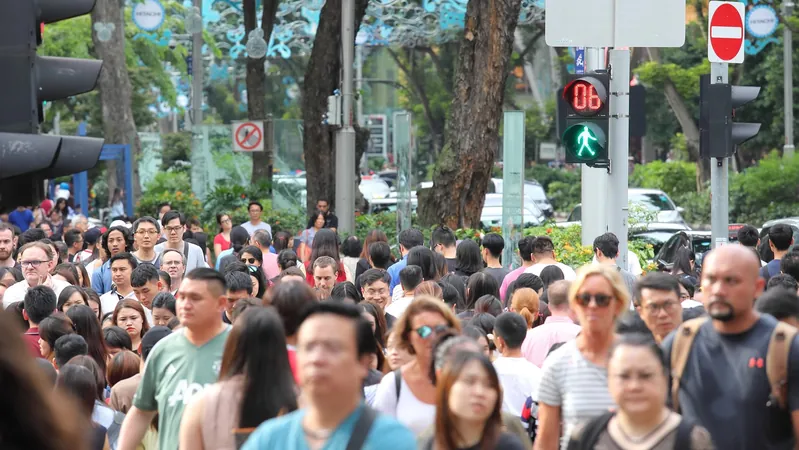
Singapore's Population Surges Past 6 Million, Sparking Concerns Over Crowds and Living Costs!
2024-09-26
SINGAPORE: The streets of Singapore are growing increasingly crowded, leaving many residents voicing their frustrations online. One local lamented, "So I wasn’t imagining it when I felt that crowds are becoming more and more unbearable." This sentiment reflects the unease felt across the nation following the announcement that Singapore's population has exceeded six million, now standing at 6.04 million as of June 2024, a historical milestone for the city-state.
The population growth, as detailed in the National Population and Talent Division (NPTD) annual report released on September 24, highlights a 2% increase from the previous year, primarily driven by the non-resident demographic. Of the total population, residents number approximately 4.18 million, while non-residents make up 1.86 million.
Channel News Asia revealed that the non-resident population has surged by 5% compared to the prior year, largely comprising foreign workers, domestic helpers, dependents, and international students. Notably, work permit holders constitute 44% of the non-resident group, with migrant domestic workers making up another 15%.
This increase is particularly pronounced in sectors such as construction, marine, and shipyards, which are catching up on projects delayed due to the COVID-19 pandemic. The foreign workforce continues to play a pivotal role in supporting Singapore’s economy, providing an essential pool of diverse skills to meet the demands of local industries.
Local reactions to the growing population have been mixed. While some residents appear resigned to the new reality, others express concern over the resultant rise in living costs. "With every population increase, the cost of living also seems to rise," one resident pointed out, highlighting issues with housing prices and the soaring costs of everyday items.
Conversely, some residents argue that foreign workers are essential to the economy, particularly for jobs that locals may not want to take on. Commentary online has pointed out the necessity of foreign labor in fields such as construction, domestic services, and healthcare, questioning if locals would be willing to occupy these roles.
The government has made it clear that while the population is anticipated to grow, it is not expected to exceed 6.9 million by 2030. This figure, established in a 2013 Population White Paper, serves as a planning framework rather than a target. During discussions in the Committee of Supply last year, officials emphasized the importance of preparing for various population scenarios based on factors like birth rates and migration trends.
Moreover, according to the latest quarterly labor market report from the Ministry of Manpower (MOM) released on September 17, Singapore boasts a resident labor force participation rate of 68.6%. This impressive figure positions the nation ahead of most OECD countries, reflecting a resilient economy in the wake of ongoing adjustments.
However, amid these positive labor market indicators, low unemployment rates of 2.0% for residents and citizens raise pressing questions about the quality of life and the affordability of housing and basic necessities in an ever-crowded metropolis.
As Singapore continues to navigate its growth challenges, residents remain watchful, balancing the need for a thriving economy with concerns about their living conditions and the future of their densely populated city.


 Brasil (PT)
Brasil (PT)
 Canada (EN)
Canada (EN)
 Chile (ES)
Chile (ES)
 España (ES)
España (ES)
 France (FR)
France (FR)
 Hong Kong (EN)
Hong Kong (EN)
 Italia (IT)
Italia (IT)
 日本 (JA)
日本 (JA)
 Magyarország (HU)
Magyarország (HU)
 Norge (NO)
Norge (NO)
 Polska (PL)
Polska (PL)
 Schweiz (DE)
Schweiz (DE)
 Singapore (EN)
Singapore (EN)
 Sverige (SV)
Sverige (SV)
 Suomi (FI)
Suomi (FI)
 Türkiye (TR)
Türkiye (TR)